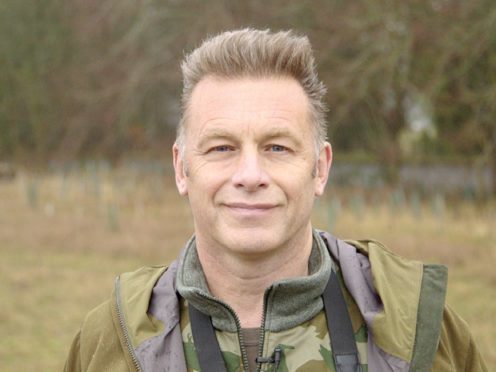Action is needed across the board, from wildlife-friendly gardens to “pop-up conservation” sites, to reverse declines in UK nature, TV naturalist Chris Packham has urged.
The situation for nature is “critical”, with species from hedgehogs to turtle doves on the brink, the TV presenter warned.
Speaking as his “bioblitz” campaign of visiting 50 sites across the UK in 10 days gets under way, Packham said nature reserves were not enough to protect wildlife.
This weekend we're setting out on our UK Bioblitz . If you'd like to support some of the grassroots projects we will be visiting please go to https://t.co/bZh57nZ4Fk #WeWantWildlife pic.twitter.com/Cy0kJaNspT
— Chris Packham (@ChrisGPackham) July 13, 2018
The “bioblitz” events involve experts and members of the public recording all the wildlife at a site in a short period of time to get a snapshot of how nature is doing.
As well as visiting nature reserves, such as Woodberry Wetlands – a London Wildlife Trust site in north east London, the bioblitz events take in other areas where there is less expectation of seeing lots of wildlife, he said.
“The underlying message for this campaign is that nature reserves are not enough, using nature reserves to look after our environment has failed because we know that most of our major habitats are in decline and many of the species that live there.
“So it’s about looking in farm fields, on rail verges, in allotments, in community spaces and gardens and the breadth of our resources where nature can prosper if it has an opportunity.
“We’re going out to take a realistic snapshot of the health of the UK’s countryside.”
We found lots of wildlife for the launch of @ChrisGPackham's UK BioBlitz at @WildWoodberry, with helpers young & old! #WeWantWildlife #Thameswater pic.twitter.com/B7ii5s2vFZ
— London Wildlife Trust (@WildLondon) July 12, 2018
Packham said it was also important to encourage young people to take part, because there was a generation of people who have not had the opportunity to get out into the countryside and learn about it.
And he called for more activism and “a movement” to help UK nature.
“What we need is more activism, not in a ranty, shouty way, and not even necessarily in a way where you’re chaining yourself to a tree to stop it getting cut down. Activism is exercising your voice.”
He said people could take to social media, sign petitions, join local groups protesting against development, or campaigning for improvements in how road verges are mowed.
On September 22, Packham is leading a people’s walk for wildlife in London, asking people whatever their interest in UK nature to join him.
“We need things done now,” he said.
“It’s absolutely critical, we’re on the brink with some things.”
But he said he was optimistic that the situation could be reversed because there are ways available to address the declines.
He pointed to Woodberry Wetlands where people live all around an urban reservoir, which is rich in reedbeds, and it benefits their health as well as hosting a “wealth of wildlife”, he said.
And he said action to protect wildlife was needed across the board.
“I think we need to look at how we consume things, we need to look at education, we need to look at landscape management whether it’s farming or models for conservation, and rewilding is something we need to explore.
“Pop up conservation is something we need to get into, thinking it doesn’t have to be permanent, we can make a difference for a season, so why not do it for a season.
“If you’ve got an area that’s going to be developed in two years’ time, plant it with wildflowers for two years then develop it. Take advantage of any space for any amount of time you can.”
And he encouraged people to take action in their own gardens, which across the UK add up to an area the size of Suffolk, asking “what use is a lawn?” and urging homeowners to rip up decking that covers backyards and “give some life a chance”.
“Use your imagination in your garden to make it friendly for wildlife,” he said.
